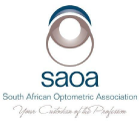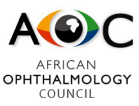Original Research
Comparison of the amplitude of accommodation determined subjectively and objectively in South African university students
African Vision and Eye Health | Vol 77, No 1 | a437 |
DOI: https://doi.org/10.4102/aveh.v77i1.437
| © 2018 Solani D. Mathebula, Mologadi D. Ntsoane, Nkalebetja T. Makgaba, Khensani L. Landela
| This work is licensed under CC Attribution 4.0
Submitted: 22 November 2017 | Published: 30 July 2018
Submitted: 22 November 2017 | Published: 30 July 2018
About the author(s)
Solani D. Mathebula, Department of Optometry, University of Limpopo, South AfricaMologadi D. Ntsoane, Department of Optometry, University of Limpopo, South Africa
Nkalebetja T. Makgaba, Department of Optometry, University of Limpopo, South Africa
Khensani L. Landela, Department of Optometry, University of Limpopo, South Africa
Abstract
Background: Historically, two clinical methods have been used for measuring the amplitude of accommodation, which are the push-up and minus lens methods. However, it has been documented that the push-up method overestimates amplitude of accommodation, while the minus lens method underestimates it.
Aim: The purpose of this study was to compare subjective and objective procedures for determining the monocular amplitude of accommodation in young optometry students.
Setting: The study was conducted in the optometry clinic at the university.
Methods: Amplitude of accommodation was measured on 45 optometry students (17 males and 28 females, whose ages ranged from 21 to 27 years) using the push-up, push-down, minus lens, modified dynamic retinoscopy and Pascal dynamic retinoscopy methods. Data were collected by three different examiners in this study. One examiner measured all the subjective tests, while another examiner measured the modified dynamic retinoscopy. The third examiner measured the Pascal heterodynamic retinoscopy.
Results: The highest amplitude of accommodation was obtained using the push-up method (10.23 ± 1.67 D), while the minus lens method gave the lowest subjective finding (8.43 ± 1.68 D). However, the subjective methods generally produced comparable results. Both retinoscopic methods showed the lowest mean amplitude of accommodation of approximately 6.50 ± 1.40 D. However, there was a high correlation between the various methods.
Conclusion: The push-up and push-down methods overestimate the true amplitude of accommodation because of the relative magnification, while the minus lens method creates an abnormal viewing environment in which the target is stationary but the stimulus becomes increasingly minified. Subjective amplitude of accommodation is an inadequate measure to assess any true accommodation because it fails to differentiate between passive depth of focus and an active accommodative power change in the eye. Therefore, subjective measurement of the amplitude of accommodation may suggest that accommodation is present when it is not. Further research is needed to further validate dynamic retinoscopy as the optimal or best possible routine clinical method to assess the true amplitude of accommodation.
Aim: The purpose of this study was to compare subjective and objective procedures for determining the monocular amplitude of accommodation in young optometry students.
Setting: The study was conducted in the optometry clinic at the university.
Methods: Amplitude of accommodation was measured on 45 optometry students (17 males and 28 females, whose ages ranged from 21 to 27 years) using the push-up, push-down, minus lens, modified dynamic retinoscopy and Pascal dynamic retinoscopy methods. Data were collected by three different examiners in this study. One examiner measured all the subjective tests, while another examiner measured the modified dynamic retinoscopy. The third examiner measured the Pascal heterodynamic retinoscopy.
Results: The highest amplitude of accommodation was obtained using the push-up method (10.23 ± 1.67 D), while the minus lens method gave the lowest subjective finding (8.43 ± 1.68 D). However, the subjective methods generally produced comparable results. Both retinoscopic methods showed the lowest mean amplitude of accommodation of approximately 6.50 ± 1.40 D. However, there was a high correlation between the various methods.
Conclusion: The push-up and push-down methods overestimate the true amplitude of accommodation because of the relative magnification, while the minus lens method creates an abnormal viewing environment in which the target is stationary but the stimulus becomes increasingly minified. Subjective amplitude of accommodation is an inadequate measure to assess any true accommodation because it fails to differentiate between passive depth of focus and an active accommodative power change in the eye. Therefore, subjective measurement of the amplitude of accommodation may suggest that accommodation is present when it is not. Further research is needed to further validate dynamic retinoscopy as the optimal or best possible routine clinical method to assess the true amplitude of accommodation.
Keywords
Amplitude of accommodation; presbyopia; dynamic retinoscopy; push-up method
Metrics
Total abstract views: 3574Total article views: 16509
Crossref Citations
1. Agreement between distance and near minus-lens-to-blur amplitude of accommodation in pre-presbyopic subjects
Mbali Z.G. Ndlovu, Kgaogelo T. Mothapo, Makgatha H. Kgatla, Muano S. Tshihomu, Solani D. Mathebula
African Vision and Eye Health vol: 78 issue: 1 year: 2019
doi: 10.4102/aveh.v78i1.491


